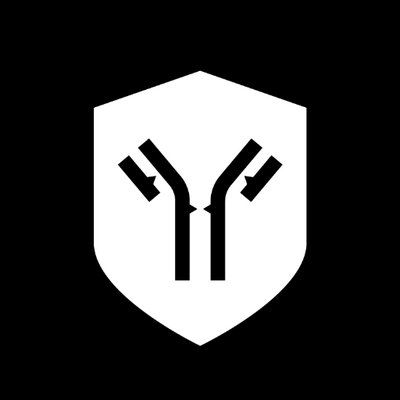Request Demo
Last update 08 May 2025
T3SS
Last update 08 May 2025
Basic Info
Synonyms- |
Introduction- |
Related
5
Drugs associated with T3SSTarget |
Mechanism T3SS inhibitors |
Active Org. |
Originator Org. |
Active Indication |
Inactive Indication- |
Drug Highest PhasePhase 2 |
First Approval Ctry. / Loc.- |
First Approval Date20 Jan 1800 |
Target |
Mechanism T3SS inhibitors |
Active Org.- |
Originator Org. |
Active Indication- |
Inactive Indication |
Drug Highest PhasePending |
First Approval Ctry. / Loc.- |
First Approval Date20 Jan 1800 |
Target |
Mechanism T3SS inhibitors |
Active Org.- |
Originator Org. |
Active Indication- |
Inactive Indication |
Drug Highest PhasePending |
First Approval Ctry. / Loc.- |
First Approval Date20 Jan 1800 |
6
Clinical Trials associated with T3SSJPRN-UMIN000038909
Effect of hair growth KB001 - Effect of hair growth KB001
Start Date01 Nov 2019 |
Sponsor / Collaborator- |
NCT03638830
Randomized, Blind, Placebo-controlled Study to Evaluate Safety and Efficacy of Ftortiazinon in Combination With Maxipime®, in Comparison With Placebo in Combination With Maxipime®, in the Treatment of Patients With Complicated Urinary Tract Infections Caused by P. Aeruginosa
This study is planned to evaluate the safety and efficacy of the drug Ftortiazinon in combination with the drug Maxipime® in comparison with placebo in combination with the drug Maxipime® in the treatment of hospitalized adult patients with complicated urinary tract infections caused by P. aeruginosa.
Start Date17 Oct 2018 |
NCT01695343
A Phase 2, Randomized, Double-blind, Placebo-controlled, Repeat-dose Study of KB001-A in Subjects With Cystic Fibrosis Infected With Pseudomonas Aeruginosa
The purpose of this study is to confirm and extend the Phase 1-2 KB001 findings of an airway anti-inflammatory effect in CF individuals with chronic Pseudomonas aeruginosa (Pa) airway infection. It is hypothesized that steady-state levels of KB001-A in CF subjects with airway Pa infection will be safe and well-tolerated, and will increase the time-to-need for antibiotic treatment (IV, inhaled, or oral) for worsening of respiratory tract signs and symptoms compared with placebo.
Start Date01 Dec 2012 |
Sponsor / Collaborator |
100 Clinical Results associated with T3SS
Login to view more data
100 Translational Medicine associated with T3SS
Login to view more data
0 Patents (Medical) associated with T3SS
Login to view more data
1,443
Literatures (Medical) associated with T3SS01 Aug 2025·Microbial Pathogenesis
dctA, dctB, and dctD contribute to the utilization of C4-dicarboxylates, carbon, nitrogen, as well as virulence in Acidovorax citrulli
Article
Author: Mijiti, Maihemuti ; Zhao, Tingchang ; Yang, Yuwen ; Guan, Wei ; Yang, Lina ; Abuduzhayier, Ayijiamali ; Wang, Lan
09 Apr 2025·mBio
HilD-regulated chemotaxis proteins contribute to
Salmonella
Typhimurium colonization in the gut
Article
Author: Tandon, Naman ; Kari, Laszlo ; Steele-Mortimer, Olivia ; Baylink, Arden ; Cooper, Kendal G. ; Doran, Kathleen ; Chong, Audrey ; Gomes Da Silva, Lidiane ; Cockrell, Diane C.
09 Apr 2025·mBio
Quorum sensing employs a dual regulatory mechanism to repress T3SS gene expression
Article
Author: Baker, Elizabeth N. ; Papenfort, Kai ; Paul, Payel ; Rusch, Douglas B. ; Geyman, Logan J. ; van Kessel, Julia C. ; Podicheti, Ram
1
News (Medical) associated with T3SS16 Sep 2024
Alderley Park, Cheshire, U.K. Infex Therapeutics, a leading anti-infectives specialist, announces that the first patient has been dosed in a Phase IIa clinical trial for RESP-X, a new anti-virulence therapy to treat Pseudomonas aeruginosa (Pa) infections in non-cystic fibrosis bronchiectasis (NCFB) patients. Pa is a critical factor in this chronic and debilitating respiratory disease leading to recurring severe episodes of life-threatening infection, for which there are currently no approved preventative treatments.
The Phase IIa trial is a 12 patient, single centre, double-blind, placebo-controlled, dose-ranging study to evaluate the safety, initial efficacy and determine the optimal dosing of RESP-X ahead of a wider Phase IIb efficacy study. The study is taking place at the NIHR Clinical Research Facility in Liverpool University NHS Foundation Trust and will assess two doses of RESP-X at 6mg/kg and 10mg/kg.
RESP-X is a first-in-class anti-virulence antibody targeting chronic Pa bacterial infections in respiratory diseases. RESP-X is initially being developed as a long-term treatment to reduce disease flares/exacerbations in NCFB patients colonised with Pa, a chronic and debilitating respiratory disease. Colonisation with Pa increases the severity of NCFB, leading to recurring episodes of debilitating and life-threatening infection called exacerbations. There are currently up to six million NCFB patients in major global markets, of which up to 30% have chronic Pa colonisation. Despite its prevalence and severity. Despite its prevalence and severity, there are currently no licensed treatments for the prevention or reduction of infective exacerbations due to Pa colonisation in NCFB patients. There is also potential to expand the development of RESP-X into cystic fibrosis and COPD in addition to acute settings such as hospital and ventilator-acquired pneumonia and blood stream infections due to Pa.
Dr Peter Jackson, Executive Director of Infex Therapeutics, said: “The start of the phase IIa study for RESP-X in NCFB patients is an important milestone for Infex, which will provide valuable insights on dosing as well as early signs of efficacy in patients ahead of a larger phase II study. RESP-X is a promising new treatment option for NCFB patients colonised with Pa, a chronic and debilitating disease that impacts millions of patients around the world for which there are currently no approved preventative treatment options. The Phase I data demonstrated an excellent safety and pharmacokinetics profile and I look forward to progressing RESP-X through phase II.”
About RESP-X
In-licensed from Japanese pharma company Shionogi, RESP-X is a novel humanised monoclonal antibody designed to help the body tackle Pa infections, a hard-to-treat, drug-resistant pathogen recognised by the WHO as a critical threat to human health.
RESP-X does not kill the bacteria directly but deactivates a critical virulence mechanism, enabling the patient’s own immune system to more efficiently fight the infection. It blocks Pa exotoxin delivery by the Pa type III secretion system (T3SS). The T3SS is a critical mechanism by which Pa causes organ injury, evades the immune system and gains a foothold in humans. By blocking this virulence system RESP-X downgrades the ability of Pa to attack human tissues and restores the ability of immune cells to control Pa.
NCFB is a disease defined by an irreversible and progressive dilatation of bronchi due to chronic bronchial inflammation. It is characterised by periods of stable disease, with flare-ups, known as “exacerbations”, that increase in frequency and severity over the patient’s lifetime. There are at least eight million NCFB patients in major markets, of which around 30% have chronic Pa colonisation. In the UK, the British Lung Foundation estimates there are in excess of 30,000 NCFB patients.
NCFB exacerbations are closely associated with acute bacterial infections, with Pa being one of the leading causes. In most severe cases, patients have multiple exacerbations per year, resulting in high hospitalisation and mortality rates. As the disease progresses there are serious economic impacts for patients and healthcare systems.
Phase 1Phase 2Clinical Result
Analysis
Perform a panoramic analysis of this field.
login
or

AI Agents Built for Biopharma Breakthroughs
Accelerate discovery. Empower decisions. Transform outcomes.
Get started for free today!
Accelerate Strategic R&D decision making with Synapse, PatSnap’s AI-powered Connected Innovation Intelligence Platform Built for Life Sciences Professionals.
Start your data trial now!
Synapse data is also accessible to external entities via APIs or data packages. Empower better decisions with the latest in pharmaceutical intelligence.
Bio
Bio Sequences Search & Analysis
Sign up for free
Chemical
Chemical Structures Search & Analysis
Sign up for free


